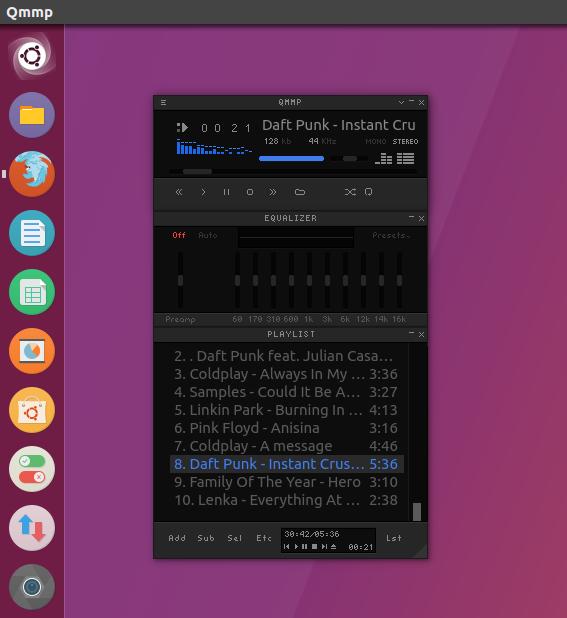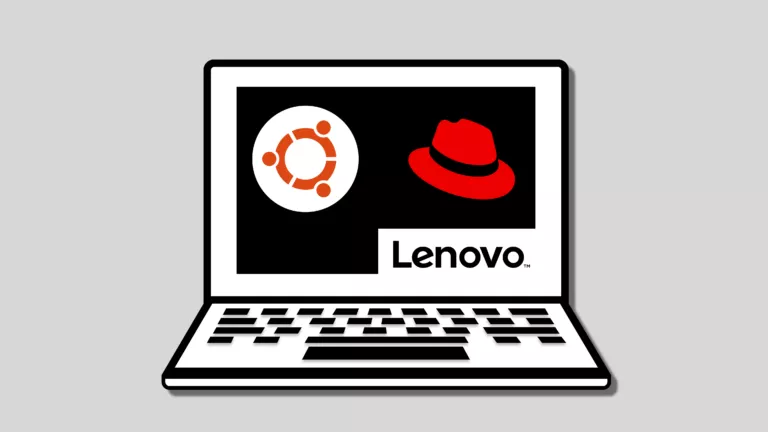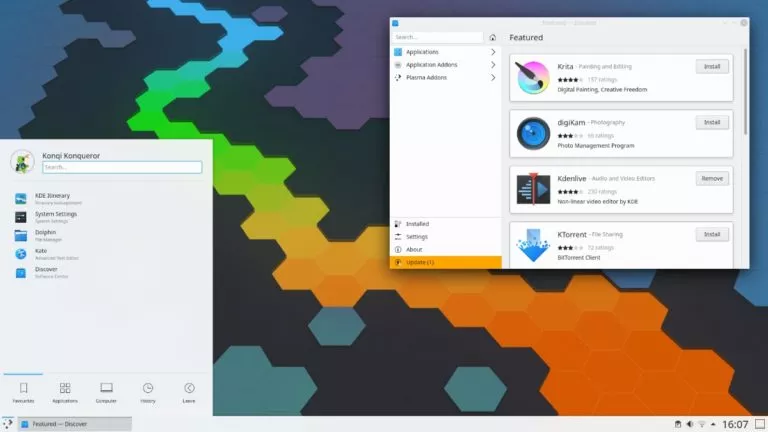8 Best Linux Music Players That You Must Try In 2021
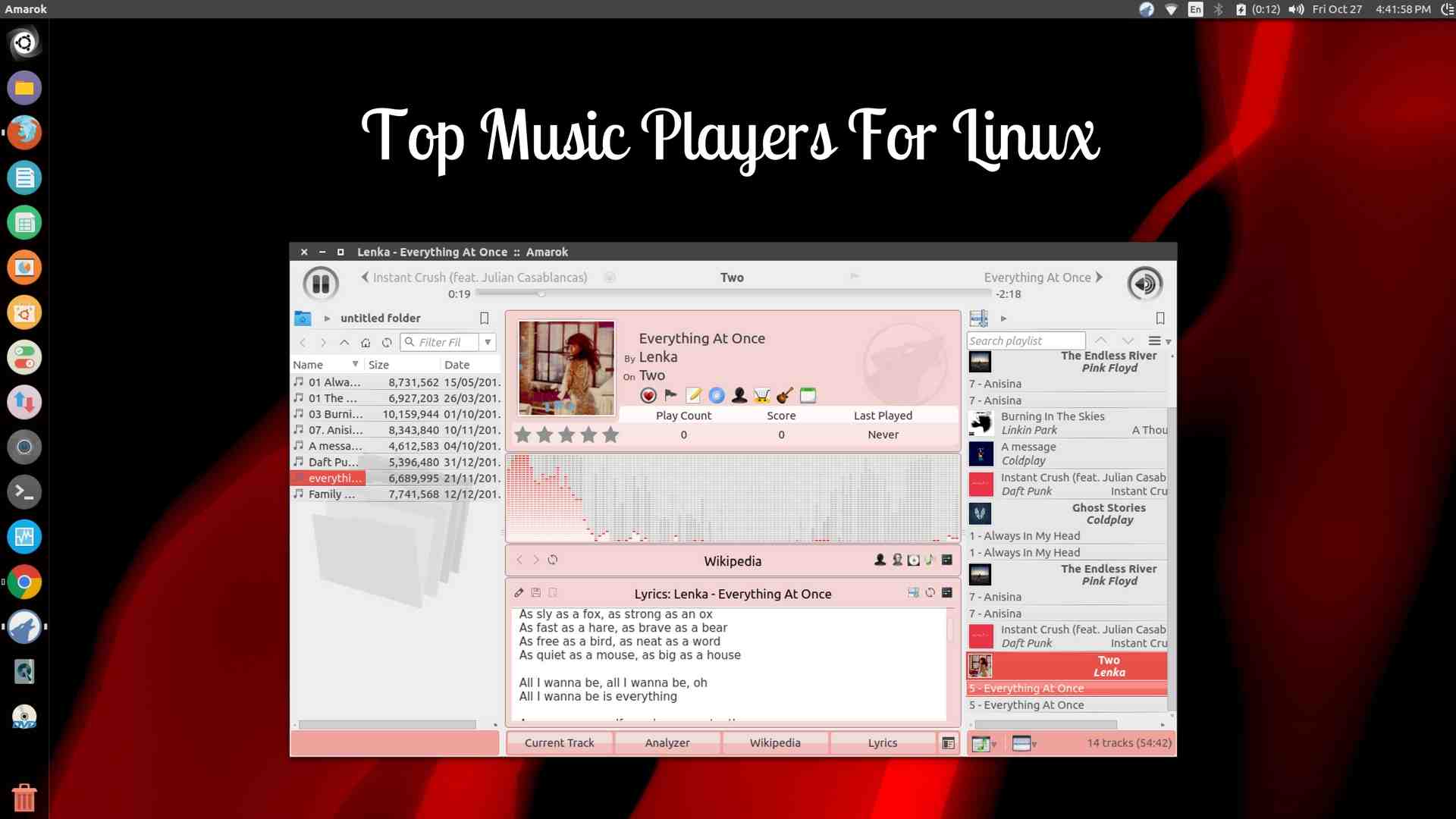
One of the things we use our computers for is multimedia consumption. When you move to a new operating system, it makes perfect sense to look for new media players. In the past, we made a list of the best video players for Linux, but in this article, we’ll be listing out the best music players for Linux. Let’s take a look at them.
I’ve also added their installation commands for Ubuntu Linux. In case you’re using Linux distros other than Ubuntu or its derivatives, you can use respective commands that you can find on their websites.
Top Audio Players For Ubuntu And Other Distros
1. Clementine
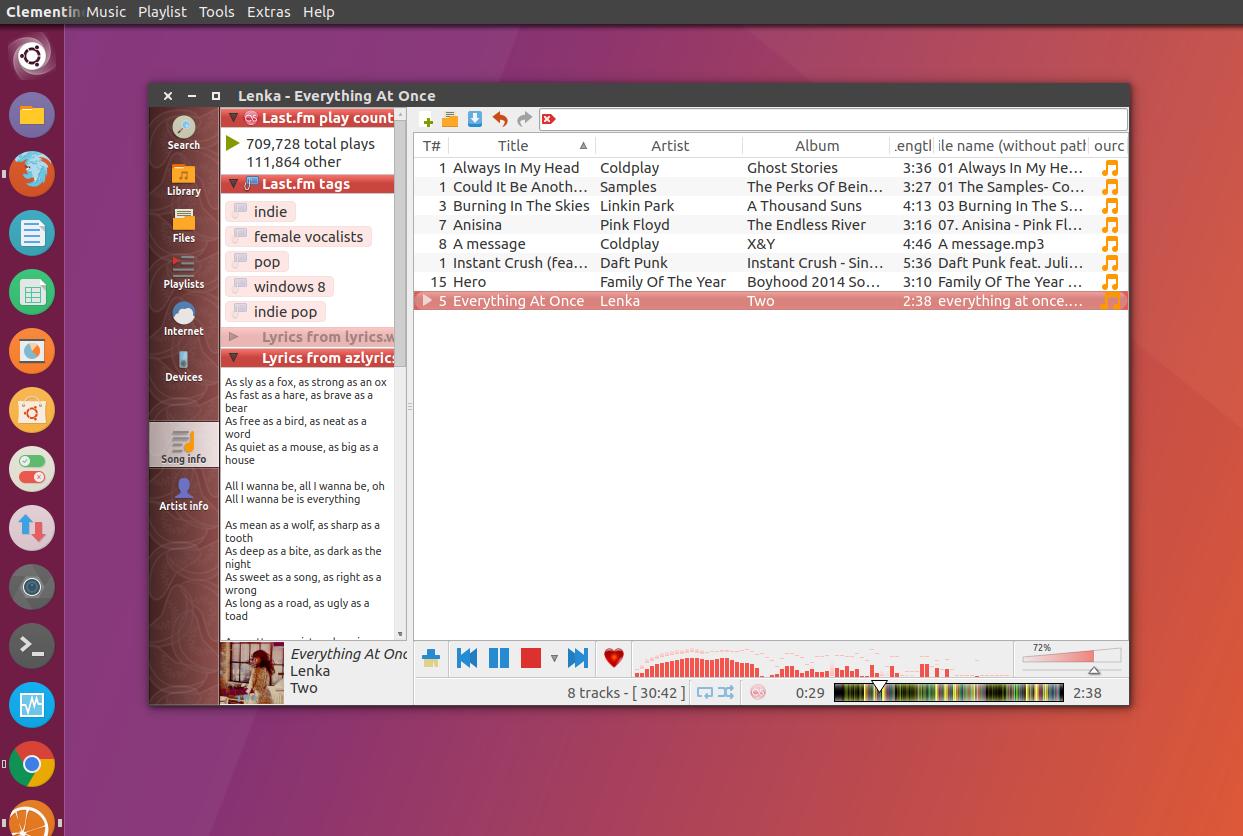
Clementine is a cross-platform, open-source music player that’s a popular choice of Linux-using music enthusiasts. Written in Qt, this software is known for its ease of usage and friendly interface. The music player’s main window is divided into three parts. The tracks are loaded in the main, right-most window, and the basic controls related to song playback and playlists are at the top and bottom.
Clementine’s strength is its tree-like navigation style which turns out to be useful in case you’re accustomed of playing the music directly from folders on the different drive. At the top-right, there’s a big search box that lets you search for song files on the basis of artist, album, and song.
You can also edit the metadata of a song easily from the main window itself. Under the song and artist info tabs at the left, you can easily get lyrics of the song, read about the song from last.fm, and know about artist details. In case you have a large collection of music, it can also act as a library organizer.
Why use Clementine for Linux music playback?
- Tree structure navigation
- Clean interface
- Built-in lyrics, song, and artist info
Installing Clementine in Ubuntu:
sudo apt-get install clementine
2. Amarok
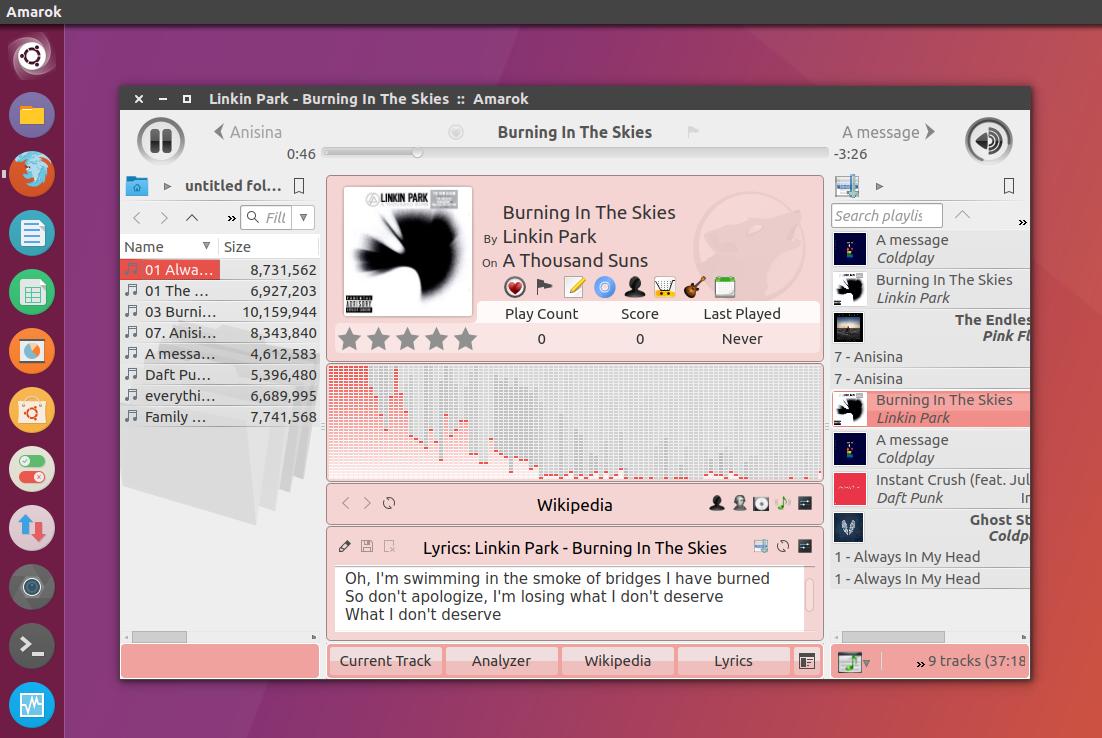
Amarok was KDE’s default music player. It is an open-source tool has been around for years and serving Linux enthusiasts with pleasure. Even after losing its charm in recent years and sliding out of the spotlight, it manages to give tough competition to other players in this collection as it comes with a huge set of features and plugins.
The player has three main window panes: Playlist browser, Collection, and Player Window. It also boasts of some advanced features like fetching from media players like iPod. My favorite feature of Amarok is its automatic Wikipedia search that looks up for artists and shows lyrics, if available.
Even though the Amarok music player hasn’t got any new feature updates in the past four years, it’s still one of the best ones around. We hope that its makers focus on it again and help it rise to the top.
Why choose Amarok music player?
- Support for tons of music formats
- Integrated Wikipedia search for lyrics and artist
- Lots of plugins, built-in equilizer
- Tons of equalizer options
Installing Amarok in Ubuntu:
Download the source tarball from the official website
3. Rhythmbox

The third entry on this list of best Linux music players is Rhythmbox by the GNOME team, the default Ubuntu music player. Personally, I’m not a big fan of this audio tool due to its lack of customization options. However, you can add functionalities and change new features via plugins. If all you need is a basic music player, you can stick with Rhythmbox.
The main window of the Rhythmbox Linux music player is divided into two parts. The songs and playlists are loaded in the main area on the right. Using the import option, you can add files to the playlist. The browse option reveals the artists and album tab under which songs are categorized. It also comes with options to play online radio and podcasts easily.
Why stick with Rhythmbox audio player?
- No-nonsense music player
- Can also act as a DAPP server
- Support for plugins
Installing Rhythmbox in Ubuntu:
sudo apt install rhythmbox
4. Audacious
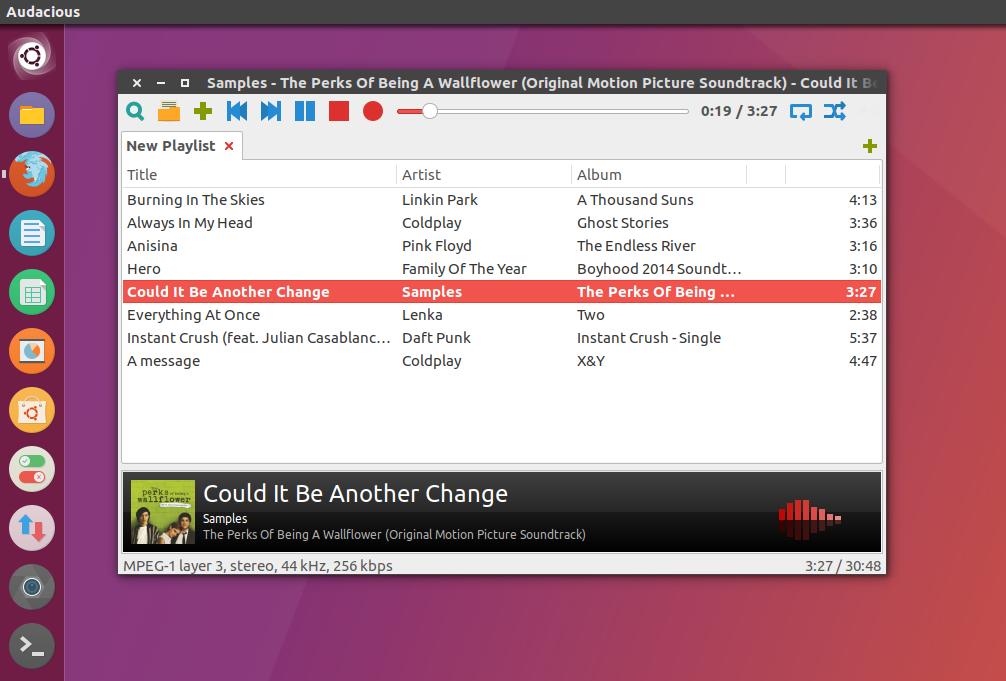
Audacious is an open-source media player that’s widely popular among audiophiles. It’s a no-nonsense software that stays low-resource and makes sure that even a PC with older specifications doesn’t feel overwhelmed while playing music. It uses around 20-25MB RAM and supports all popular audio file formats.
All the necessary controls in this MP3 player for Linux are stacked at the top that can be used to add music files to the playlist, skip the song, pause it, or shuffle and repeat it. Using the search option, you can load songs in your library and search using song or artist name. In case you love personalizing the looks of Audacious, you can do so with Winamp themes and get more options as well. While it’s not an in-built functionality, using plugins you can fetch lyrics, set an alarm, and a lot more.
Why use Audacious music player?
- Low on resource usage
- Simple to use
- Support for plugins and themes
Installing Audacious on Ubuntu:
sudo apt-get install audacious
5. QMMP
In case you’re a fan of a small, single-window interface, look no further and install Qmmp. It borrows its looks from the popular Winamp music player. Unlike other Linux music players that take up a big-screen space, Qmmp has all the basic controls and playlists in a small window.
Using the menu option at the top left corner, you can access other options like visualization, settings, etc. With its extensive theme support, you can customize Qmmp to a great extent and make it your own. Apart from support for various audio formats and cuesheets, this Linux music player also ships with Volume Normalization as a built-in option.
Why use Qmmp for Linux audio playback?
- Winamp-like small interface
- Simple to use, lightweight
- Extensive support for themes
Installing Qmmp on Ubuntu:
sudo apt install qmmp6. Cmus

Cmus is a Linux music player that runs in a terminal. If you’re addicted to your terminal and keyboard, Cmus is meant for people like you. No matter how big is your music library, Cmus loads with a lighting speed and uses about 20MB RAM.
This open source software can also run on older computers whose operating systems don’t have GUI. Its keyboard shortcuts give you tons of power over your music playback and how it’s played. It goes without saying that Cmus plays all major audio formats. You can also use different open source extensions to change color themes, get lyrics, etc.
Why use Cmus terminal music player?
- Great for heavy terminal, keyboard users
- Fast, powerful, lightweight
- Customizable keybindigs
Installing Cmus on Ubuntu:
sudo apt-get install cmus
Meanwhile, you can also check out our article on the best music player for Windows 10/ 11 PCs here!
7. GNOME Music
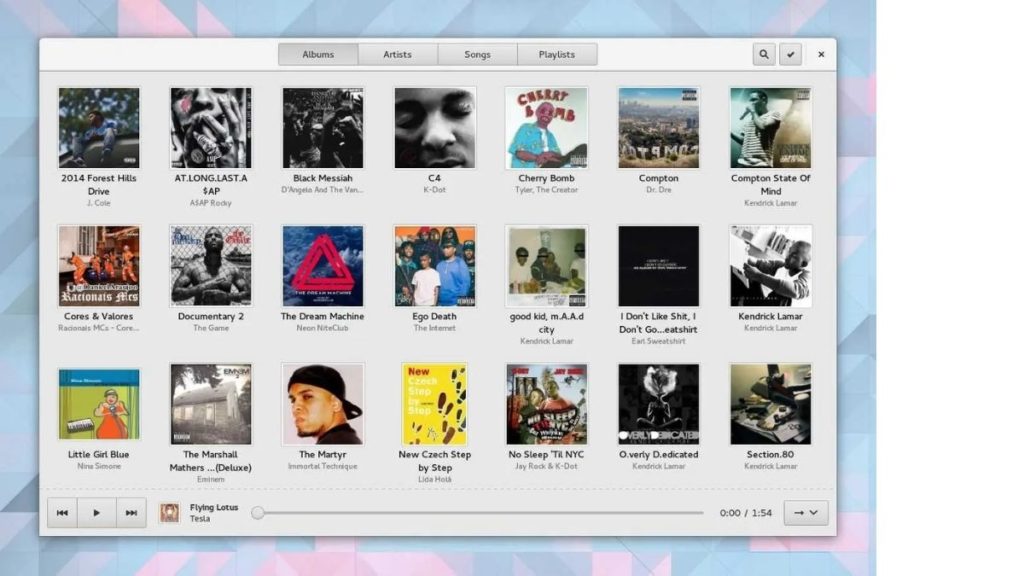
If simplicity is what you desire the most in a music player, and if you want to play your favorite tracks with no fancy features, GNOME Music is the way to go.
There isn’t much to talk about this music player since all it does is it searches for music in the Music directory and lets you play them. It also comes with a lot of keyboard shortcuts for navigation and playback. You get four tabs on the above – Albums, Artists, Songs, and Playlist, to sort music and play what you like.
Why use GNOME Music?
- Keyboard shortcuts for navigation and playback
- Simple design
- Lightweight
Installing GNOME Music
sudo apt-get install gnome-music8. VLC
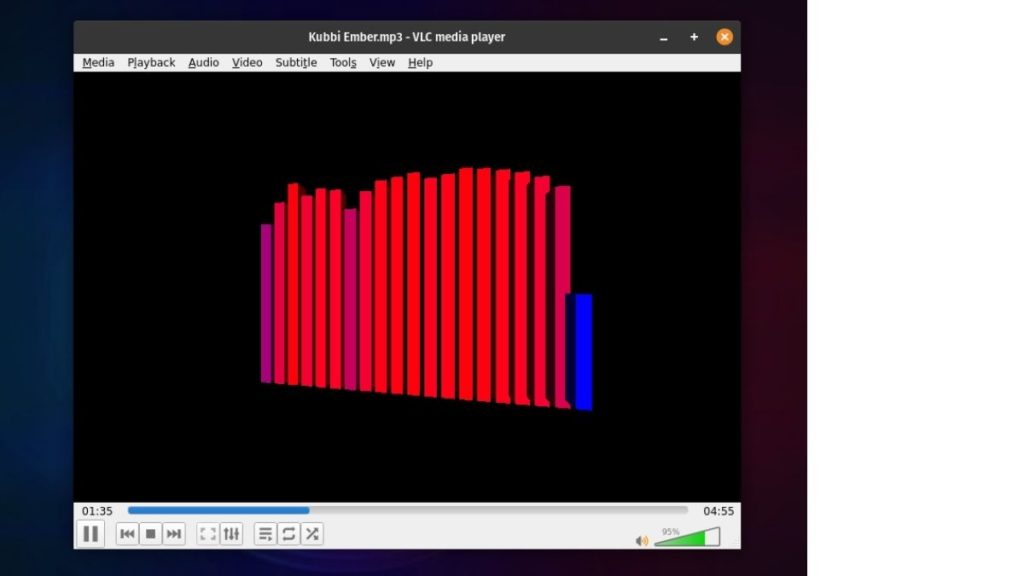
VLC is one of the oldest media players in existence and we all grew up with it. Apart from video files, it can also play audio tracks. The sheer number of customization options, plugins, codecs, and other features make it one of the best media players out there.
And let’s not forget the different visualization options, which will give you a satisfying slap of nostalgia. Overall, it’s still one of the best audio and video players out there.
Why use VLC?
- One of the oldest players in existence
- Great customization options
- Can play audio and video
- Plugins
Installing VLC
sudo apt install vlcEditor’s Recommendation:
Like tons of Linux distros for different needs like gaming, older PCs, programming, etc., software for these operating systems also has lots of variety. If you wish to use a feature-rich Linux music player that satisfies your needs, Amarok and Clementine are the best options available.
I personally use Amarok as my media player, and I’m hoping that it gets updated soon with some newer features. In case you’re here for a lightweight Linux music player, Audacious and Qmmp are also great choices. Do give these audio players for Linux distributions a try and share your feedback with us.

